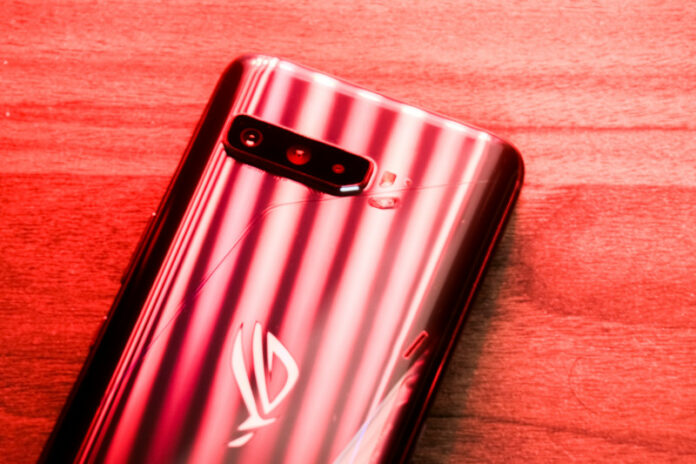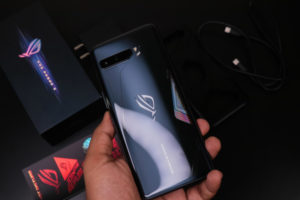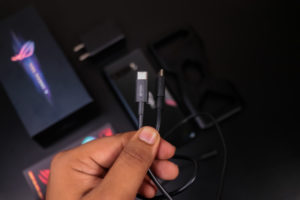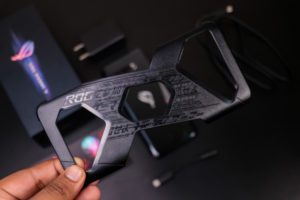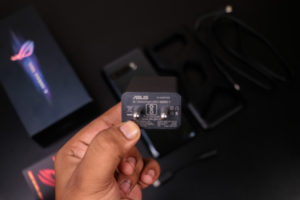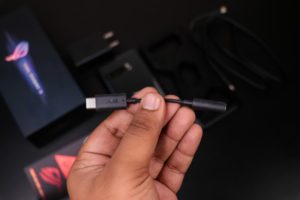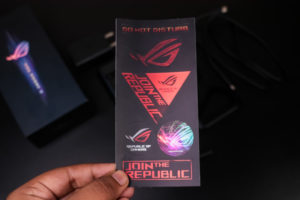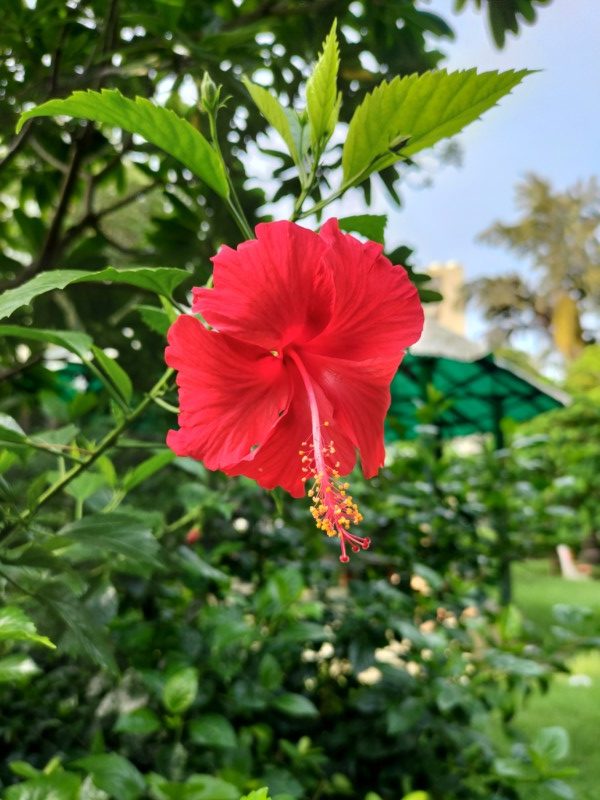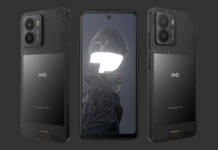Asus has been known for its gaming hardware since forever. I still remember going to Nehru Place in the ’90s to pick peripherals for my PC and since then Asus has been an integral part of my tech life.
Fast forward to 2020 and Asus has not only established itself as a leading PC maker but also the best gaming smartphone maker thanks to its ROG series of smartphones. The ROG series or the Republic of Gamer series started as a set of devices for a clan of PC buyers to what we now know as a complete ecosystem for gamers. With the launch of the ROG smartphone, Asus changed the way how we game on a smartphone, and it instantly became a hit. Then Asus made improvements and launched the 2nd generation of the ROG Phone which was equally welcomed by all.
The Asus ROG Phone 3 carries on the legacy of the earlier two iterations. So, after testing it for months, here is our unbiased long term review of the ROG Phone 3. Truth be told, when we started testing it, PUBG was still allowed, and by the time we finished our review, it is long gone.
Before we start the review, let’s see what are the specs of the ROG Phone 3.
| Brand | Asus |
| Model | ROG Phone 3 |
| Release date | 22nd July 2020 |
| Launched in India | Yes |
| Dimensions (mm) | 171 x 78 x 9.9 mm |
| Weight (g) | 240.0 |
| Battery capacity (mAh) | Li-Po 6000 mAh |
| Fast charging | Proprietary |
| Colours | Black |
| Screen size (inches) | 6.59 |
| Touchscreen | Yes |
| Resolution | 1080×2340 pixels |
| Aspect ratio | 19.5:9 |
| Pixels per inch (PPI) | 391 |
| Processor | octa-core |
| Processor make | Qualcomm Snapdragon 865+ |
| RAM | 12GB |
| Internal storage | 128GB |
| Expandable storage | No |
| Rear camera | 64-megapixel (f/1.8) + 13-megapixel (f/2.4) + 5-megapixel (f/2.0) |
| Front camera | 24-megapixel (f/2.0) |
| Operating system | Android 10 |
| Skin | ROG UI |
| Wi-Fi | Yes |
| Wi-Fi standards supported | 802.11 a/b/g/n/ac/6 |
| GPS | Yes |
| Bluetooth | Yes, v 5.10 |
| USB Type-C | Yes 3.1 (side) and 2.0 (bottom) |
| Number of SIMs | 2 |
| Active 4G on both SIM cards | Yes |
| SIM 1 | |
| SIM Type | Nano-SIM |
| GSM/CDMA | GSM |
| 3G | Yes |
| 4G/ LTE | Yes |
| Supports 4G in India (Band 40) | Yes |
| SIM 2 | |
| SIM Type | Nano-SIM |
| GSM/CDMA | GSM |
| 3G | Yes |
| 4G/ LTE | Yes |
| Supports 4G in India (Band 40) | Yes |
| Face unlock | Yes |
| Fingerprint sensor | Yes |
| In-Display Fingerprint Sensor | Yes |
| Compass/ Magnetometer | Yes |
| Proximity sensor | Yes |
| Accelerometer | Yes |
| Ambient light sensor | Yes |
| Gyroscope | Yes |
BOX COMPONENTS:-
- ROG PHONE 3 Handset
- Type-C Cable
- Protective Case
- 30W Fast Charger
- Type C to 3.5mm Adaptor
- ROG Stickers
- User Manual and Warranty
DESIGN & DISPLAY

Starting, the ROG Phone 3 has downplayed its design compared to ROG Phone 2. It sports a glass aluminum construction with an illuminated RGB logo on the back. The single vent is now replaced with a transparent cooling chamber and the copper finishing is now concealed under a silver coating which makes its design to be more aesthetic for gamers. Due to vents on its back, the device lacks some flagship functionalities such as Wireless Charging and IP certification. Also, better thermals make more sense in a gaming device rather than Wireless Charging and IP Rating. There’s also a small air vent that comes into action when you buy its extra accessory i.e, Aeroactive Fan Cooler.

With the weight of almost 240gms, its heavyweight build feels bulky for a longer duration but because this device holds a massive 6000mAh battery, this weight seems justified. Its tall form factor makes it comfortable to use in landscape, which is the most preferable orientation for gamers. The rear is glossy as well as slippery too which retains smudges. Fortunately, the curved rear glass panel and aluminum frame help in the easier grip. Also, its cutout case adds grip to it. The rectangular camera module is on the upper left portion. It boasts two LEDs:- a flashlight and a light for photography next to the camera module. On the bottom, it houses a Type-C charging jack with no headphone jack like its earlier generations.
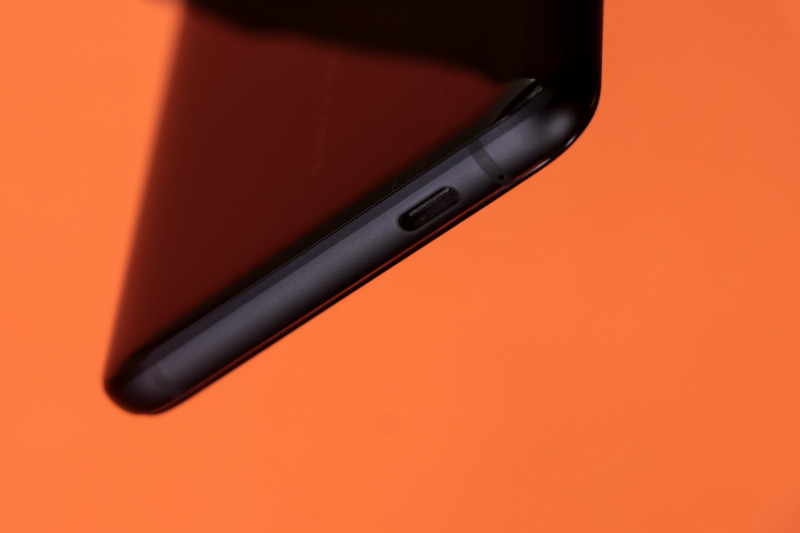
On the left, it sports a Dual USB Type-C port in the middle which is covered with a removable part of rubber alongside a SIM Tray. This port provides optimal positioning in landscape mode while gaming. However, this port is made for the Aeroactive 3 cooling fan accessory. This Aeroactive 3 fan boosts in cooling the device while you gaming in a performance mode which is known as ‘X-mode’. Asus is also selling a plethora of accessories for this device as they did it for ROG Phone 2. Some of the accessories are a Dock station for using it with TVs, a dock station to use your device with a monitor, mouse, and keyboard, and a gamepad that will turn your device into a handheld gaming console like Nintendo Switch. We didn’t get the shot to test them out thoroughly but we’ve tried these accessories on ROG Phone 2 and they were quite responsive and adds a bonus to your gaming experience.
While the top of the phone is bare, the right side bundles a volume rocker and a power button respectively. It also boasts two air triggers on the top and bottom which can be configured as buttons. These ultrasonic buttons are handy to use and accessible through the index finger. It can also sense motion in ROG Phone 3 which can detect three gestures:- tap, slide, and long press. The triggers can be partitioned into two sub-triggers which offer excellent accuracy with various types of gestures and sensitivity levels which incredibly well. Apart from gaming, the air triggers can be used to map squeeze action to launch an app, turn on X mode, and to capture a screenshot, and much more.
Moving towards the front, it sports small bezels like ROG Phone 2 does; No notch, punch hole, and curved display. The top bezel houses an RGB light, front camera, and dual front-firing speakers on top and bottom. These speakers are so loud, you don’t sense distortion at higher volumes. They’re loud and provide better bass response than most of the smartphones out there.

The 6.59 inch fHD+ AMOLED with HDR10+ display stretched to 19.5:9 tall aspect ratio which appears with the industry-first 144Hz refresh rate display with a peak brightness up to 1000 nits. Also, the display can be overclocked to 160hz (through some minor tweaking which is simple to do). The display carries a 1ms response rate and the touch sampling rate has increased from 240hz to 270hz which means the phone feels buttery smooth while scrolling and can be beneficial for gaming. After using a lot of devices that offer a similar 120hz display, it’s hard to differentiate between 120hz and 144hz. But, overclocking the display to 160hz makes a difference from 120hz. But, it’s hard to elaborate on the difference between 144hz and 160hz, you’ll only feel the difference when you experience it yourself; No article or youtube video justice to that experience, as they say, you need to touch to feel it. Also, its higher-touch sampling rate won’t lead to accidental touches. It also has an in-display fingerprint sensor which is quite reliable and snappy.
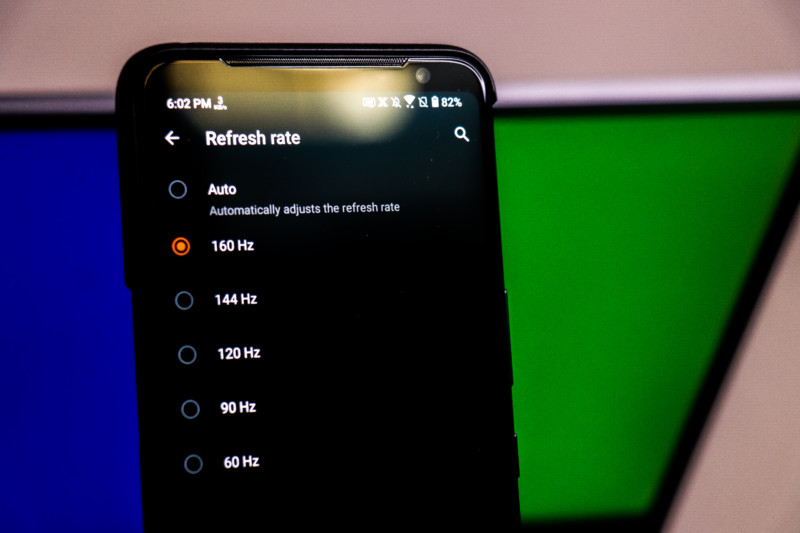
For some people who were complaining about the Black Crush issue while watching dark movies, the temporary solution to it is to download the Screen Balance app from Playstore and enable the required permission it wants, then set the strength to 50% and contrast to 100%. The ASUS team is working on this black crush issue and it will be solved in future OTA updates. (This issue has now been fixed by an OTA update by Asus). Talking about the colour calibration of the display is not great but that’s not its core purpose. The colour peeks tuned while gameplays, Thanks to 10-bit colour processing. If your preference is a more neutral white point with punchy colours, then the ‘Cinematic’ mode works great for watching movies and enjoying OTT content on it.
PERFORMANCE
The Asus ROG Phone 3 sports a Qualcomm Snapdragon 865+ which overclocks the CPU to 3.1 GHz which is paired with GDDR5 RAM and UFS 3.1 storage for superfast data transmissions. Checking about benchmarks, it marked a score of 4,520 in single-core and 13,367 in multi-core meanwhile OnePlus 8 Pro scored 4,195 in single-core and 13,142 in the multi-core which makes the ROG Phone 3 to be the faster device than the OnePlus 8 Pro.
It ships with a couple of variants up to 12GB RAM and up to 256GB storage. Talking about the gaming experience, we played PUBG Mobile session on HDR+Extreme, enabled 160hz display with X-mode to be turned on while recording the gameplay for almost around 1 hour and it offered constant 60fps. Sometimes, the frames fluctuated to 59 frames but that doesn’t create a huge impact on the gameplay. Through heavy gameplays, the device warms up a lot and it’s nothing alarming but the surprising fact is it cools down very shortly, huge shoutout to the Air vents and cooling chambers. We played some other games as well such as Asphalt 9, Fortnite Mobile and it didn’t hiccup at all.
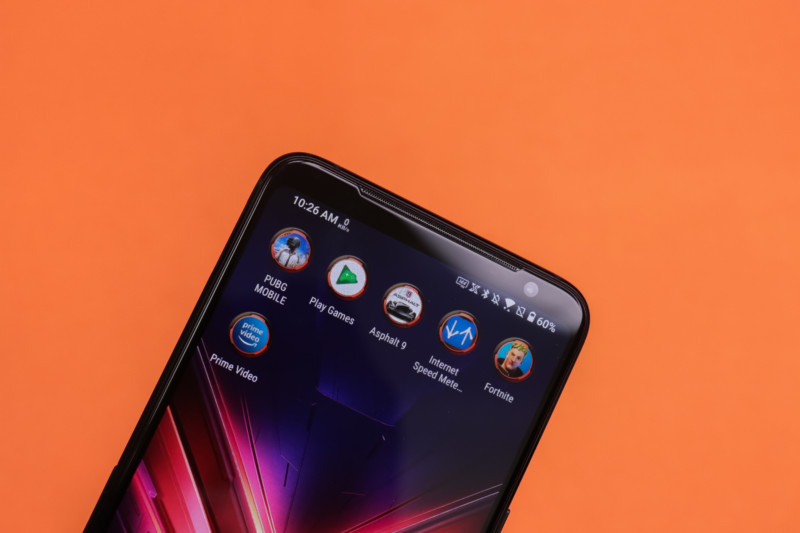
Considering the accessories which Asus is selling off with this device, you can use this device with a lot of peripherals that can even work as a PC, Nintendo Switch, and works well with your TV as well. The devices approach with the GameGenie app which helps in blocking the notifications and call alerts while gaming, quick toggle to increase the refresh rate and to lock brightness, with ‘Marked clip’, you can record short videos for up to 30 seconds, customize crosshair for games, and much more.
As I’ve already mentioned about AirTriggers, it benefits a lot in refining the gameplay by mapping the gestures. You can record gameplay while recording game sound, internal sound, and your mic sound simultaneously. With the X55 5G mobile platform, this device boasts 5G capabilities which makes it future proof in upcoming years. To chalk it up, it can crush throughout the heavy multitasking and can even satisfy hardcore gamers without breaking a sweat.
CAMERA

The cameras on a gaming smartphone is not a priority by the smartphone manufacturer. The primary sensor holds a 64MP Sony IMX686 sensor and two other camera sensors are the ultrawide cameras and a macro camera. In daylight conditions, the primary sensor clenches an excellent dynamic range with sufficient details and balanced colours. The highlight and shadows existed well balanced though the device struggles when there is a lot of punchy colours in the scene.
Overall, the cameras were improved in this third iteration of this device. The wide-angle camera retains a similar colour profile as the primary camera carries. Sometimes, this sensor lacks some focus on a particular area and that particular place looks jerky in the frame. The 5MP macro camera serves decent and attains great colours with decent sharpness. The low light camera capabilities of this device are not that much considerable but still, it was better than you can expect from a gaming smartphone.
The front camera boasts a 24 selfie camera that offers good selfies which include great sharpness and colour even in dim lighting conditions. This device can shoot up to 8K video resolution with great dynamic range and the footage was well stabilized which hasn’t expected with this smartphone.
SOFTWARE

It comes with ROG UI with Android 10 out of the box which is as near to stock android but puts in a lot of nifty features that most users won’t complain to. It offers customizations to the stock launchers like grid size, swipes down gesture, hiding and locking apps, creating folders in app drawers, etc; its dialer can automatically record your call, custom battery, and power button menu mods, AOD display with custom faces, etc.
Asus did a bunch of tasks into its software optimization with a lot of customization in Armoury crate and GameGenie, the aspect which you might not like is its aggressive background app management feature; like how aggressively it kills the background running apps which can irk some users. To sum it up, if you are a gamer then it’s the best software you can ever opt for.
BATTERY
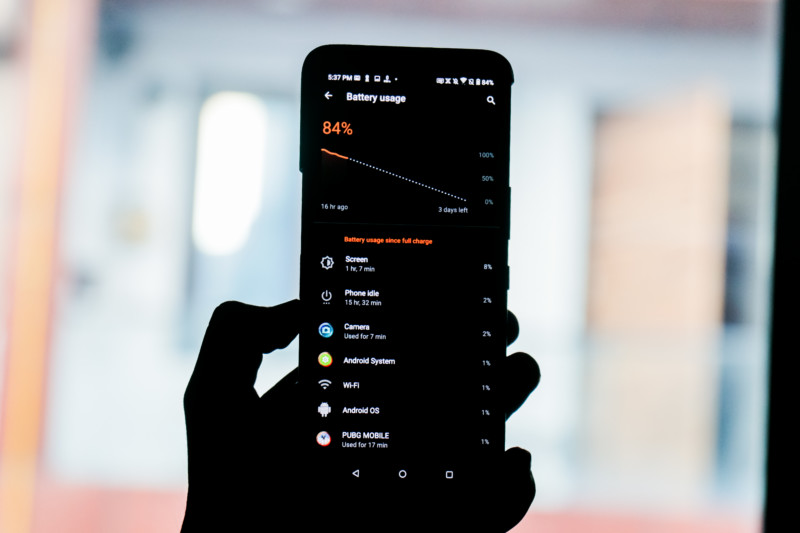
With the integration of 5G and higher refresh rates, its 6000mAh battery will easily last a full day of heavy usage. The average screen on time for me lasted for almost 9 hours on 160hz enabled with high brightness and X mode to be turned off. On moderate usage, it consumes almost 13-14% for an hour or so on higher refresh rates. When I played PUBG Mobile on HDR+ Extreme with 160hz; the battery drained from 100-0% in 4-5 hours with ease which is a great experience indeed.
It also ships with a 30Watt Charger, which can juice up your device from 0-100% in 107 minutes and it reaches 52% in 30 minutes of charge.
THE UNBIASED VERDICT

There are two variants of the Asus ROG Phone 3 between 8GB of RAM with 128GB of storage forms. 49,999, and 12GB of RAM with 256GB of storage, for Rs. 57,999. There is one more variant that packs a 16GB of RAM with 512GB of storage which is not available in India. At this price point, it’s not reasonable but it delivers a lot for the money. The first device with Snapdragon 865+ Processor, blazing-fast storage, and a huge number of features that gamers and even non-gamers will admire such as a 144hz display, RGB logo on the rear, 6000 mAh battery, and a great set of cameras. No device can match the gaming capabilities of this device.
However, there were plenty of options that cost less and gaze much sleeker into pockets like Realme X50 Pro 5G, OnePlus 8 series, and Mi 10 5G, even these devices can manage these games well sufficiently. If your priorities are well focused on Cameras as well as performance, The Mi 10T and Mi 10T pro become an easy pick over it if you’re not much into gaming. It also offers the higher refresh rates with SD 865 SOC, with a much sleeker look and capable camera setup against the ROG Phone 3.Though the Mi 10T and 10T Pro offers a LCD display,it depends on the preference of the user which display they prefer;LCD or Amoled.
If you want to stand out and be acknowledged as a ‘gamer’ to become the best in competitive settings. It offers an unbeatable processor with higher refresh rates, gaming accessories, and air triggers. This device can gratify the gamers but not to those who want a device for normal usage. If you’re the one who’ll never use a device for gaming then this device is not for you.
Disclaimer: We tested the Asus ROG Phone 3 smartphone (8GB/128GB) as our primary device on Vodafone and Jio 4G VoLTE network for more than a month. All our reviews are unbiased and are published without the brand getting to read it before you guys. We don’t change our reviews on pressure from brands and that’s the reason we are not sent review units from companies like Samsung, OnePlus, and a few more.
